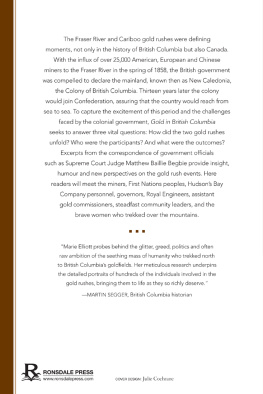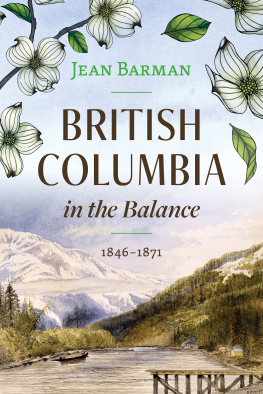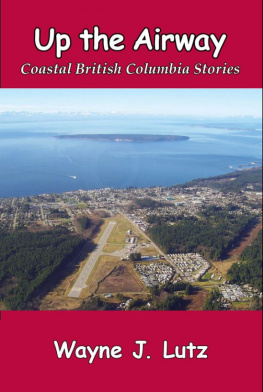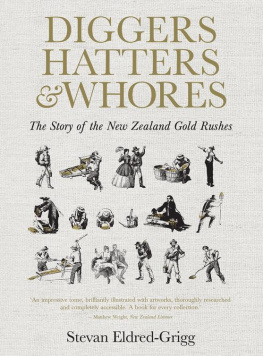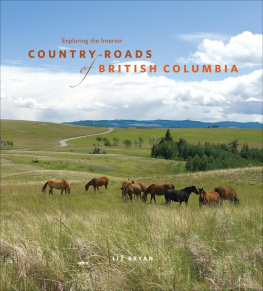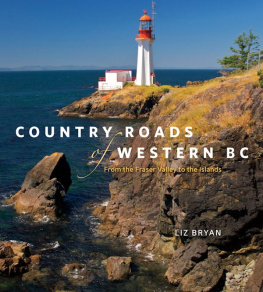
Gold in British Columbia
OTHER BOOKS BY MARIE ELLIOTT
Fort St. James and New Caledonia: Where British Columbia Began (Harbour Publishing, 2009)
Gold and Grand Dreams: Cariboo East in the Early Years (Horsdal & Schubart, 2000)
Gold in British Columbia
DISCOVERY TO CONFEDERATION
Marie Elliott
RONSDALE PRESS
GOLD IN BRITISH COLUMBIA
Copyright 2020 Marie Elliott
All rights reserved. No part of this publication may be reproduced, stored in a retrieval system, or transmitted, in any form or by any means, without prior written permission of the publisher, or, in Canada, in the case of photocopying or other reprographic copying, a licence from Access Copyright (the Canadian Copyright Licensing Agency).
RONSDALE PRESS
3350 West 21st Avenue, Vancouver, B.C. Canada V6S 1G7
www.ronsdalepress.com
Typesetting: Julie Cochrane, in Caslon 11.5 pt on 15
Cover Design: Julie Cochrane
Cover Image: Frederick Dally, Bill Phinney working a rocker in Barkerville. Courtesy of Vancouver Public Archives, VPL8634.
Maps: Eric Leinberger
Paper: Ancient Forest Friendly Enviro 100 edition, 60 lb. Husky (FSC), 100% post-consumer waste, totally chlorine-free and acid-free.
Ronsdale Press wishes to thank the following for their support of its publishing program: the Canada Council for the Arts, the Government of Canada, the British Columbia Arts Council, and the Province of British Columbia through the British Columbia Book Publishing Tax Credit program.

Library and Archives Canada Cataloguing in Publication
Elliott, Marie, 1938, author
Gold in British Columbia: discovery to Confederation / Marie Elliott. First edition.
Issued in print and electronic formats.
ISBN 978-1-55380-517-5 (softcover)
ISBN 978-1-55380-518-2 (ebook) / ISBN 978-1-55380-519-9 (pdf )
1.Gold mines and mining British Columbia History 19th century. 2.Gold miners British Columbia History 19th century. 3. British Columbia Gold discoveries History 19th century. 4. British Columbia History 19th century. I. Title.
FC3820.G6E45 2018971.1'02C2018-900530-0C2018-900531-9
At Ronsdale Press we are committed to protecting the environment. To this end we are working with Canopy and printers to phase out our use of paper produced from ancient forests. This book is one step towards that goal.
Printed in Canada by Island Blue, Victoria, B.C.
to the people of t
he Cariboo-Chilcotin
The British Columbia Archives holds a rich collection of gold rush documents. Their archivists were most helpful in locating material when I searched the gold commissioners records, colonial correspondence and many other fonds. Further assistance came from Dr. David Chuenyan Lai and special collections librarians at the University of Victoria, and from Martin Segger, Jeanne David, Gerry Buydens, Ron Greene, Chris Hanna and Sherri Robinson at Victoria. Farther afield, Barkerville archivist Mandy Kilsby, curator Bill Quackenbush and archaeologist Dr. Ying-ying Chen shared new information about the historic area. Just when it seemed all research was exhausted, Dale Hunchak of North Vancouver sent photographs from a family album that provided a unique perspective on life at the Vieth and Borland ranch at Keithley Creek. My thanks also to Eric Leinberger for his maps throughout the book.
When it came time to hike the gold rush routes that Judge Matthew Baillie Begbie had mapped, I was most fortunate to have the enthusiastic company of Gary and Lana Fox, Jean Speare, and Robin and Loretta Grady of Quesnel. As members of the Friends of Barkerville, they had ensured that the 1861 Gold Rush Pack Trail from Keithley Creek to Williams Creek was restored. I am also indebted to archivist Frances Gundry and teacher/historian David Falconer, who explored the Quesnel Forks, Keithley Creek and Snowshoe Plateau trails with me. At Likely, Alan and Donna Purdy offered lakeside accommodation, and Margaret Murray Henderson and Clint and Lucy Robinson provided refreshments and more historical information after our long days outdoors.
At Williams Lake, Kris Andrews and John and Anna Roberts shared their vast knowledge of the Cariboo-Chilcotin. Farther west, Tim and Merle Bayliff showed me the site of Fort Chilcotin, and Wanda and Roger Williams at Anahim Lake took me on exploratory horseback trips down the Precipice Trail to Bella Coola and to the Ulkatcho Mountains in the Chilcotin. A special thank you is also due to the Tsilhqotin elders for their information.
Farther afield, Judith Booth in Australia kindly sent me her research on Florence Wilson. In England, Reverend Robert Nind and Philip Nind pieced together Philip Henry Ninds genealogy, and at Nieder-Weisel, Germany, Isabell Haeuser Haertl translated material and shared her knowledge of the brave young girls who immigrated to North America. Extra special appreciation goes to Dr. Sylvia Van Kirk who most generously shared her extensive research and support, and to Mike Wegerif for technical expertise.
A final extra special thank you goes to Ronald Hatch for his superb editing, and to the staff at Ronsdale Press for overseeing publication. I thank you all and especially my daughter, Carol, who patiently untangled computer glitches and looked after the household during my absences.
CONTENTS

Civilization exists by geological consent, subject to change without notice.
Will Durant
RICH IN SILVER , copper and gold, the North American Cordillera ruggedly defines the western edge of the continent. Its mountains and valleys have lured argonauts through deep canyons and over high passes ever since Hernn Corts invaded the Aztec Empire in 1519. In the nineteenth century, gold rushes to the Fraser River and the Cariboo region of British Columbia were just two of the great mining events that took place in the northwest section of the Cordillera, but they have a unique history that is worth examining closely. We can quantify their wealth with some accuracy and follow the careers of many of the participants over time. The mining sites are accessible today, whether you are travelling through the Fraser Canyon or exploring the many creeks in the Cariboo.
The influx of some twenty-five thousand American, European and Chinese miners to the Fraser River in the spring and summer of 1858 compelled the British government to declare the mainland known then as New Caledonia the Colony of British Columbia, and within thirteen years, the combined elements of geology and human endeavour allowed B.C. to achieve Confederation with Canada in 1871.
In an attempt to capture the excitement of the Fraser River and Cariboo gold rushes, and the challenges faced by the colonial government during the years prior to Confederation, this book seeks to answer three vital questions: How did the gold rushes take place? Who were the participants? And what was achieved?
The smaller gold rushes to the Queen Charlotte Islands, Bridge River, Stikine River, the Kootenays, Omineca and Cassiar that took place during this time period will also be noted.
Excerpts from the correspondence of government officials and from Matthew Baillie Begbie, the only Supreme Court judge in the Colony of British Columbia for most of the period, provide insights into the enormous task of establishing law and order as well as including a good deal of humour, and this during one of the major social upheavals of North America. Equally important were the numerous petitions from the citizens of small towns and mining camps that underscored the concerns and determination of what Governor James Douglas called the colonys motley population.
Next page
